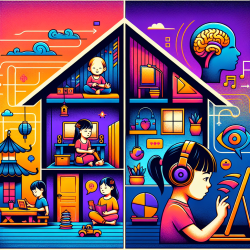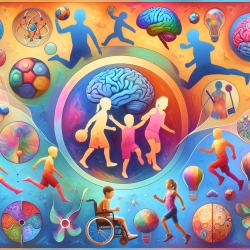Introduction
The home environment is a pivotal factor in shaping a child's early development, influencing cognitive, emotional, and social growth. The study "Measuring Home Environments Across Cultures: Invariance of the HOME Scale Across Eight International Sites from the MAL-ED Study" provides valuable insights into how these environments can be assessed across diverse cultural contexts. This research is crucial for practitioners, especially those involved in online therapy services like TinyEYE, as it emphasizes the importance of understanding the cultural nuances that impact child development.
The HOME Scale: A Brief Overview
The Home Observation for Measurement of the Environment (HOME) scale is an observational tool designed to assess the quality and characteristics of a child's home environment. It evaluates aspects such as emotional and verbal responsivity, cleanliness, safety, and cognitive stimulation. The study adapted this tool for use in eight diverse international sites, aiming to ensure its validity and reliability across different cultural contexts.
Key Findings and Implications
The study identified a three-factor structure within the HOME scale: Emotional and Verbal Responsivity, Clean and Safe Environment, and Child Cleanliness. These factors were found to be valid across the eight sites, demonstrating the tool's adaptability in different cultural settings. For practitioners, these findings highlight the importance of considering cultural differences when assessing home environments and planning interventions.
- Emotional and Verbal Responsivity: This factor underscores the importance of caregiver-child interactions in fostering cognitive and language development. Practitioners should encourage caregivers to engage in meaningful verbal exchanges with children, as these interactions are crucial for cognitive growth.
- Clean and Safe Environment: A clean and safe home is essential for preventing infections and promoting overall health. Practitioners should guide families in maintaining a safe environment to support children's physical and psychological development.
- Child Cleanliness: Personal hygiene is linked to health and cognitive outcomes. Practitioners should emphasize the importance of cleanliness in reducing disease transmission and supporting developmental milestones.
Practical Applications for Practitioners
For practitioners working with children, especially in online therapy settings, understanding the cultural context of a child's home environment is essential. Here are some practical applications:
- Use culturally adapted tools like the HOME scale to assess home environments accurately.
- Develop interventions that consider cultural practices and norms, ensuring they are relevant and effective.
- Collaborate with families to create supportive home environments that promote healthy development.
Encouraging Further Research
This study opens avenues for further research into the impact of home environments on child development across cultures. Practitioners are encouraged to explore these areas to enhance their understanding and improve outcomes for children globally.
To read the original research paper, please follow this link: Measuring home environments across cultures: Invariance of the HOME scale across eight international sites from the MAL-ED study?










